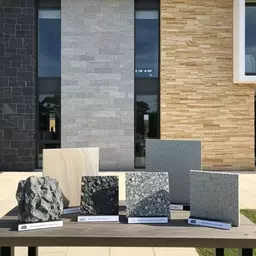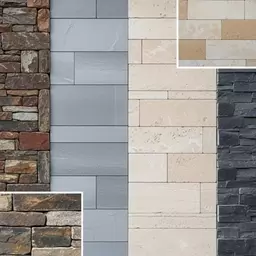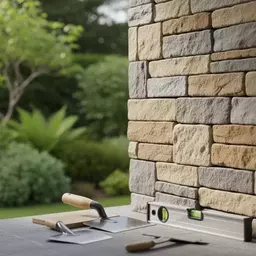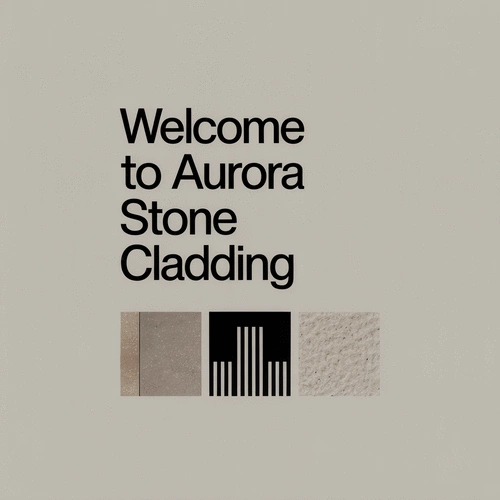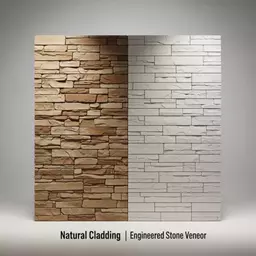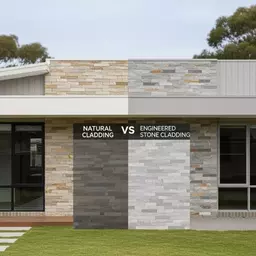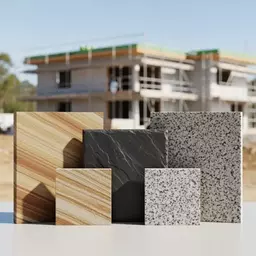As eco-conscious design becomes increasingly popular, understanding the materials we choose is essential. Did you know that sustainable stone cladding not only beautifies your home but also respects the environment? Let's dive into the key insights that will empower you to make informed decisions when selecting stone cladding for your residence.
What You Will Learn
- Sustainability in stone cladding means choosing materials with minimal ecological impact throughout their lifecycle.
- Natural stone is often more eco-friendly as it requires less processing compared to engineered stone.
- Proper installation of stone cladding enhances energy efficiency, leading to lower energy bills.
- Both natural and engineered stone offer durability, reducing the need for frequent replacements.
- Many stone options are locally sourced, supporting local economies and reducing transportation emissions.
- At the end of their life cycle, stone materials can often be repurposed, minimizing waste.
Sustainable Stone Cladding: Natural vs. Engineered Options
A comparison of key characteristics for natural and engineered stone cladding, highlighting their environmental impact and benefits.
Natural Stone Cladding
- ✓ Sourced directly from quarries
- ✓ Unique aesthetics, natural beauty
- ✓ Often requires less processing
- ✓ Can be recycled/repurposed
- ✓ Potential for higher extraction impacts
Engineered Stone Cladding
- ✓ Made from 95% crushed stone + resins
- ✓ Mimics natural stone, consistent appearance
- ✓ Reduces waste and resource consumption
- ✓ Often requires less energy to produce
- ✓ Less variation compared to natural stone
Shared Sustainability Benefits
Durability: Long lifespan, reduces need for replacements. Thermal Performance: Improves insulation, reduces energy use. Low Maintenance: Saves time and resources.
Understanding Sustainability in Stone Cladding
Sustainability in building materials has become a buzzword that resonates with eco-conscious homeowners and builders alike. But what does it really mean? At Aurora Stone Cladding, we believe it encapsulates a commitment to materials that are not only beautiful but also respect the environment. Sustainable stone cladding options minimize waste, promote longevity, and often come from sources that practice environmental stewardship.
Ultimately, sustainability is about making choices that benefit both our homes and the planet. It involves selecting materials that are responsibly sourced and that contribute positively to our living spaces. As an advocate for innovative architectural design, I’ve seen how sustainable stone cladding can transform a home while also supporting the environment.
Defining Sustainability in Building Materials
When we talk about sustainability in building materials, we refer to materials that are environmentally friendly throughout their lifecycle—from extraction and production to disposal. In the world of stone cladding, this means considering natural stones that are quarried responsibly, as well as engineered stones created with minimal ecological impact.
- Natural Stone: Sourced directly from quarries, it often requires less processing and can be recycled. The National Park Service provides valuable insights into the characteristics of natural stone cladding, highlighting its aesthetic and historical significance.
- Engineered Stone: Made from 95% crushed stone combined with resins, it's designed to mimic natural stone while reducing waste and resource consumption. For a comprehensive comparison, The Heritage Foundation offers a detailed report on the advantages and disadvantages of natural versus manufactured stone.
- Durability: Both options tend to have long lifespans, reducing the need for replacements and thus conserving resources. The ASTM International's committee on cladding sets standards that ensure the quality and longevity of these materials.
By understanding these definitions, homeowners can make informed decisions that align with their values and enhance their living environments. The goal is to create spaces that echo both beauty and responsibility—a principle that is at the heart of what we do at Aurora Stone Cladding.
Why Eco-Conscious Homeowners Choose Stone Cladding
Have you ever wondered why so many eco-conscious homeowners choose stone cladding? It’s simple! The unique combination of aesthetics, durability, and environmental benefits makes it a compelling option. Homeowners today want to invest in materials that reflect their values, and stone cladding does just that.
- Natural Beauty: Stone cladding offers a timeless elegance that enhances any architectural style.
- Energy Efficiency: Proper installation of stone cladding can improve insulation, leading to lower energy bills.
- Low Maintenance: When installed correctly, stone requires minimal upkeep, saving both time and resources.
Choosing stone cladding is more than just a design decision; it’s about endorsing a lifestyle that prioritizes the environment. By selecting a material that lasts, homeowners are investing in a sustainable future.
Exploring the Aesthetic Appeal of Sustainable Stone Cladding
The visual impact of stone cladding is undeniable! Whether you're drawn to the rugged charm of natural stone or the sleek finish of engineered options, sustainable stone can provide the perfect touch for your home. Imagine walking up to a façade that not only looks stunning but also tells a story of care for the environment.
- Versatile Designs: Stone cladding can be used in various applications, from exterior walls to elegant interior features.
- Color Variations: Both natural and engineered stones come in an array of colors and textures, allowing for personalized designs that reflect your style.
- Timelessness: The enduring quality of stone means it remains stylish for years, making it a smart long-term investment.
As I guide clients through their stone cladding choices at Aurora Stone Cladding, I always emphasize the dual benefits of aesthetic appeal and sustainability. With stone, you can achieve that show-stopping look while being kind to our planet!
Pro Tip
When selecting stone cladding, consider opting for locally sourced materials. Not only does this reduce transportation emissions, but it also supports local economies and ensures that your investment has a positive environmental impact. It's a simple yet effective way to make a significant difference!
Frequently Asked Questions
- What does "sustainability" mean in the context of stone cladding?
- Sustainability in stone cladding refers to choosing materials with minimal ecological impact throughout their entire lifecycle, from extraction and production to disposal. This includes responsible sourcing, promoting longevity, and minimizing waste.
- Is natural stone cladding more sustainable than engineered stone cladding?
- Natural stone is often considered more eco-friendly as it typically requires less processing compared to engineered stone. However, engineered stone can be sustainable by utilizing crushed stone and resins, reducing waste and resource consumption, and often requiring less energy to produce. Both options offer durability and thermal performance.
- How does stone cladding contribute to energy efficiency?
- Proper installation of stone cladding can significantly improve a home's insulation, helping to maintain stable indoor temperatures. This reduces the need for heating and cooling, leading to lower energy bills and a smaller carbon footprint.
- What are the long-term benefits of choosing sustainable stone cladding?
- Sustainable stone cladding offers long-term benefits such as exceptional durability, reducing the need for frequent replacements. It also provides excellent thermal performance, lowering energy costs, and typically requires low maintenance, saving time and resources. Many options are locally sourced, supporting regional economies and minimizing transportation emissions.
- Can stone cladding be recycled or repurposed?
- Yes, at the end of its life cycle, stone materials—both natural and some engineered options—can often be repurposed or recycled, effectively minimizing waste and contributing to a circular economy.
Summarizing the Sustainability Benefits of Stone Cladding Options
As homeowners increasingly seek sustainable options, it's essential to understand the significant benefits that stone cladding offers. Whether you opt for natural stone or engineered alternatives, both can contribute to a more eco-friendly building approach. Let’s dive into the key aspects that make stone cladding a viable choice for eco-conscious homeowners!
Key Takeaways for Eco-Conscious Homeowners
When considering stone cladding, there are several important factors to keep in mind:
- Durability: Stone cladding is highly resistant to weathering, ensuring long-lasting performance with minimal maintenance.
- Thermal Performance: Both natural and engineered stones provide excellent insulation, reducing energy consumption for heating and cooling.
- Sustainable Sourcing: Many stone options are sourced locally, which cuts down on transportation emissions and supports local economies.
- Recyclability: At the end of their life cycle, stone materials can often be repurposed or recycled, minimizing waste.
These takeaways not only highlight the environmental advantages of stone cladding but also emphasize how these choices reflect a commitment to sustainability.
Making Informed Choices: Natural vs Engineered Stone Cladding
Deciding between natural and engineered stone cladding can feel daunting, but being informed makes the process smoother. Here’s a quick comparison to help you along the way:
- Natural Stone: Sourced directly from quarries, it offers unique aesthetics and natural beauty but may involve higher extraction impacts.
- Engineered Stone: Manufactured using stone byproducts, it provides consistency in appearance and often requires less energy to produce.
At Aurora Stone Cladding, we encourage you to weigh these options based on your project needs, style preferences, and environmental impact. Understanding the differences empowers you to make the best choice for your home!
Evaluating the Cost-Effectiveness of Sustainable Stone Options
Investing in stone cladding can seem like a considerable upfront cost. However, it’s crucial to consider the long-term savings that come from durability and low maintenance needs. Here are some factors to ponder:
- Initial Investment: Natural stone may have a higher price tag than some engineered options, but its longevity often justifies the cost.
- Maintenance Costs: Engineered stone typically requires less upkeep, which can save you money in the long run.
- Energy Savings: Improved insulation properties mean you'll likely see reductions in your energy bills, making a sustainable choice also an economically sound one.
Remember, making a sustainable choice is not just about the immediate costs; it’s about the lasting impact your decisions will have on both your wallet and the environment!
Encouraging Sustainable Decisions in Home Design
Now that we've covered the benefits of stone cladding, let’s explore how you can incorporate these sustainable materials into your home design. I’m excited to share some strategies that can help!
Strategies for Incorporating Sustainable Materials in Your Home
Integrating sustainable materials doesn't have to be complicated. Here are some strategies you can implement:
- Research Local Suppliers: Look for nearby sources of stone to reduce transportation emissions and support your community.
- Plan for Longevity: Choose materials known for their durability, which not only enhances aesthetics but also minimizes the need for replacements.
- Combine Materials: Pair stone cladding with other sustainable materials like reclaimed wood or recycled metal for unique design elements.
By making conscious choices from the beginning, you’re not just enhancing your home’s beauty; you’re also contributing to a sustainable future!
Resources for Further Learning on Sustainable Stone Cladding
Expanding your knowledge about sustainable stone cladding can significantly enhance your decision-making process. Here are some resources to consider:
- Industry Publications: Subscribe to magazines and online platforms dedicated to sustainable architecture and design.
- Workshops and Seminars: Attend events focused on eco-friendly building practices to gain insights from experts.
- Online Forums: Join communities where like-minded homeowners and professionals exchange ideas and advice on sustainable stone choices.
Staying informed not only gives you confidence but also inspires you to create spaces that reflect your values and commitment to the environment!
Understanding the Role of Energy Efficiency in Sustainable Design
Energy efficiency is a cornerstone of sustainable design and plays a crucial role in stone cladding decisions. Here’s why:
- Insulation Properties: Quality stone cladding can help maintain indoor temperatures, reducing the need for heating and cooling.
- Energy Star Ratings: Consider products with energy-efficient ratings to maximize your home’s performance.
- Passive Design Strategies: Incorporate stone to enhance passive solar heating and cooling techniques, making your home more energy-efficient.
Incorporating energy-efficient features with stone cladding not only boosts your home’s sustainability but also enhances its value over time!
Recap of Key Points
Here is a quick recap of the important points discussed in the article:
- Sustainability Definition: Sustainable stone cladding options minimize waste and are sourced responsibly to respect the environment.
- Durability: Both natural and engineered stone cladding are long-lasting, reducing the need for replacements and conserving resources.
- Energy Efficiency: Proper installation can improve insulation, leading to lower energy bills.
- Low Maintenance: Stone cladding requires minimal upkeep when installed correctly, saving time and resources.
- Sustainable Sourcing: Many stone options are locally sourced, which supports local economies and reduces transportation emissions.
- Recyclability: Stone materials can often be repurposed or recycled, minimizing waste at the end of their lifecycle.


